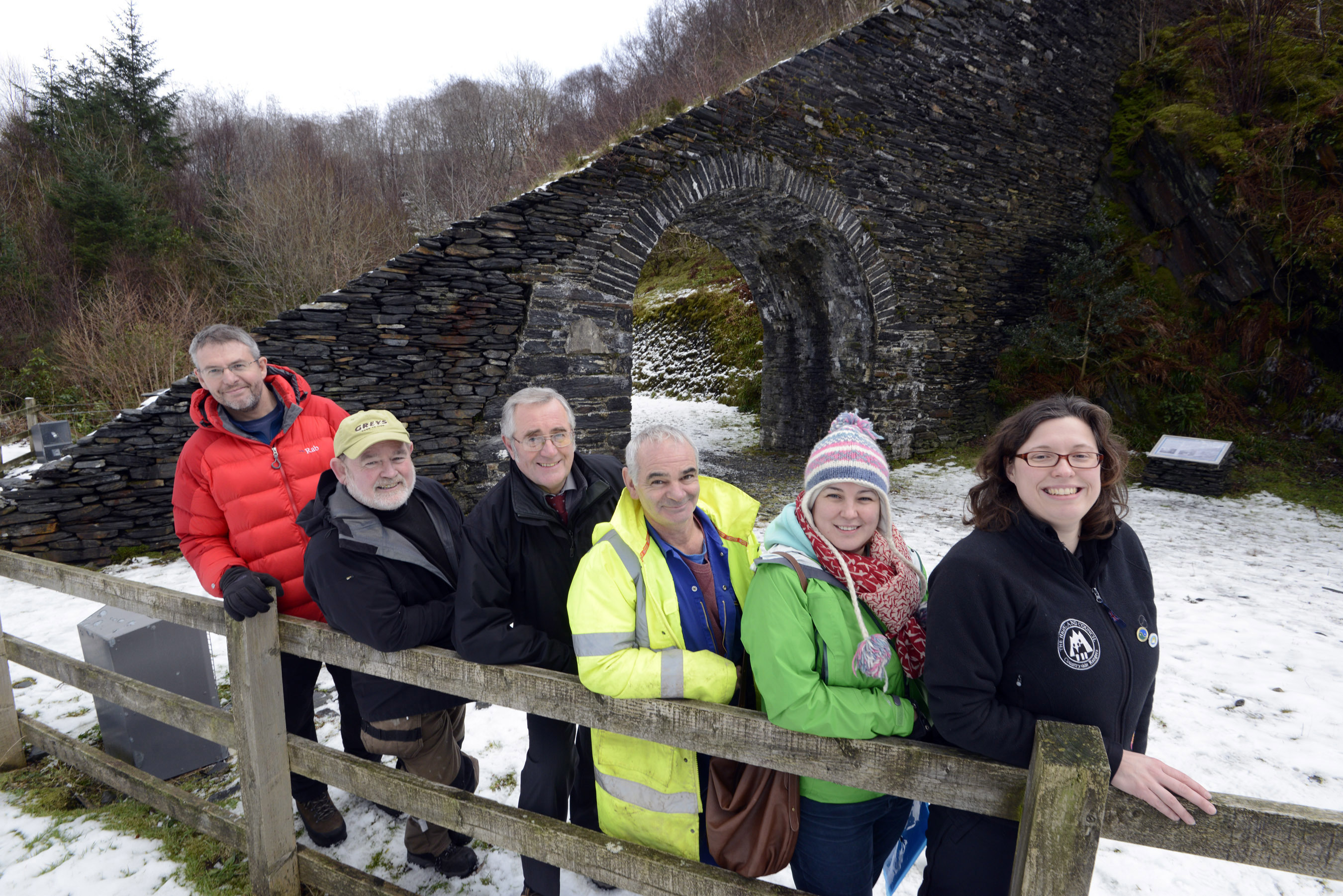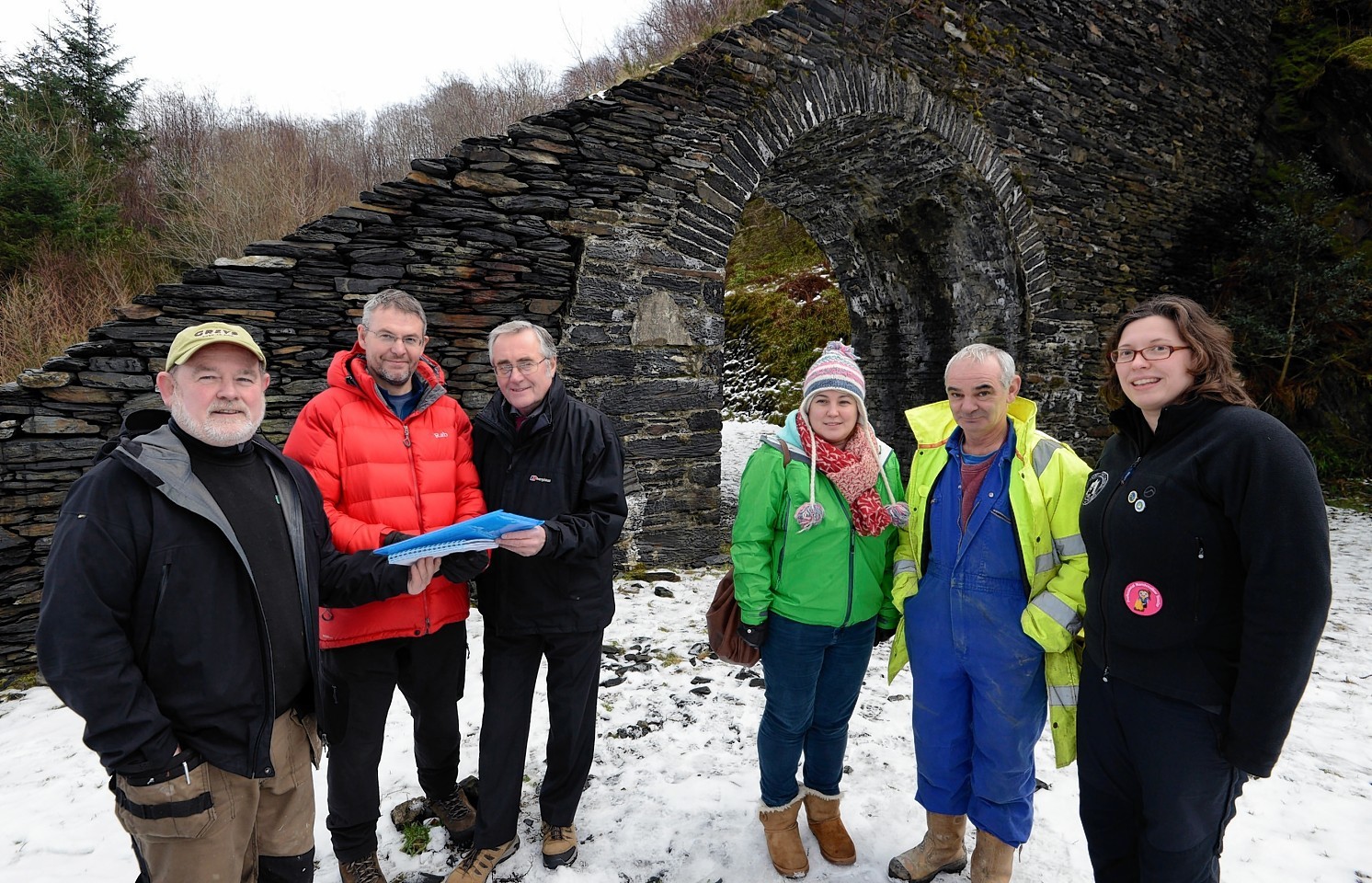A feature of an historic slate quarry in Lochaber is to be conserved and turned into a tourist attraction under a £277,000 project announced on Wednesday.
The Ballachulish slate arch – also known as the Tom Beag Inclined Plane – was built to transport wagons of dressed slate from the world famous quarry down to piers on the loch-side and to transport empty wagons back up to the quarry.
The Highland Council-owned structure, which can be seen from the A82 Inverness to Glasgow trunk road close to the village of Ballachulish, is now in need of restoration.
And funding for the project is being provided by the local authority, Heritage Lottery Fund and Historic Scotland.
The work will not only consolidate the slate arch structure, but also enable the local community to research its history and help create new interpretation about the arch and the village’s quarrying heritage.
Councillor Thomas MacLennan, leader of the council’s Lochaber area committee, said: “The slate arch is of national significance as it represents the last visible structural relic from the operational history of the Ballachulish slate quarrying industry, which dates back to the late 1600s and which, at its peak, exported slate all over the world.
“It is a fine example of 19th century engineering and is important not only within the context of Ballachulish, but also nationally as other inclined planes in Scotland only survive as earthworks.”
The research will begin in February, conservation work in early July, and completion by December 2015.
Colin McLean, head of the Heritage Lottery Fund in Scotland, said: “The Heritage Lottery Fund is delighted to support a wonderful project, which will not only conserve a physical reminder of it, but will also re-engage people with their industrial heritage and provide an important record for the region.”
And Allan Rutherford, from Historic Scotland Heritage Management, pointed out that the Tom Beag Inclined Plane was a prominent reminder of the scale of the slate industry based at Ballachulish.
He said: “In the late 19th century, Ballachulish was one of Scotland’s two slate ‘super quarries’ – the other one being at Easdale – and slates from the quarry contribute to the character of many of Scotland’s buildings.”

